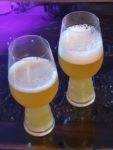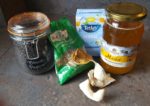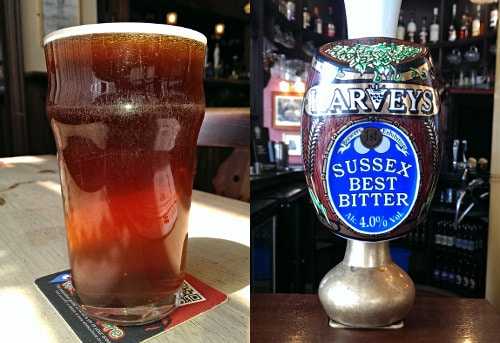
So, I’m documenting all my brew days, to help me monitor my progress as a homebrewer, and also so you can learn from my mistakes.
Today, I’m brewing an English Best Bitter. This isn’t an especially popular style, nowadays, I guess. Partly because of the prosaic nature of English beer-naming conventions. “English Best Bitter” doesn’t sound very exciting, just marginally more interesting than its sibling “Ordinary Bitter”.
Ordinary Bitter? Christ on a bike! No wonder the cherry cheesecake porter’s getting all the attention.
And now there’s a tendency now for breweries to do away with the word bitter altogether, re-branding as amber ales and the likes.
Not to worry – it’s still a classic beer style and is still as drinkable as ever. Even if it’s the type of beer you tend to talk over, not about.
The recipe is here – a pretty basic grain bill, English hops, and a Nottingham Ale dried yeast. Once I’m 100% happy with the results I’ll try it with a liquid yeast.
English Best Bitter Grain Bill
So, for a base, I’m going traditional, with 4kg of Extra Pale Maris Otter Malt. This is a little high for the style, but I enjoy a stronger beer, and it’s me who’s gonna be drinking it.
I’ve added 300g of Crisp Dark Crystal for some colour. And 200g Flaked Torrified Maize. I need to confide that I don’t know what purpose the maize has in the recipe – but it does appear in various recipes of this style. In the future, I may omit the maize, or swap it out for a grain that aids head-retention.
English Best Bitter Hops
So all of the hops I’ve chosen have proper English pedigree.
- Fuggles t90 Hop Pellets (15g)
- Northern Brewer t90 Hop Pellets (26g)
- Challenger t90 Hop Pellets (26g)
- East Kent Goldings t90 Hop Pellets (15g)
And for yeast, I’ve selected Lallemand Nottingham Beer Yeast.
As usual, I’m using the brew-in-a-bag method. I’ve got 26 litres of water pre-heated to 69°c.
I’m mashing the grain at 67°c for 60 minutes. I aimed for a strike temperature of 69°c, because adding my grain will cause the temperature to drop a couple of degrees. I stir well to avoid dough-balls and check that the temperature hasn’t dropped too much. This time the temperature is around 65°c so I need to bring it back up to 67°c.
I’ve now got unexpected visitors, which means I won’t be documenting this brew day as well as I originally planned. Instead, I will be mostly getting rather drunk. Not to worry.
Okay, mashing stage complete, I lift out my grain bag and drain it, giving it a good squeeze, and pouring some extra cold water through it to rinse out any remaining wort.
Boiling and Hop Schedule
Once the wort has reached a rolling boil, I leave it to boil for 60 minutes. There are three hop additions:
Northern Brewer 26g at 60 minutes; Challenger 26g at 30 minutes; Fuggles and Goldings (15g each) at flame-out, and steep.
I leave my wort to cool overnight in the garage and proceed to drink through all of my home-brew stock.
Fermentation
The next day, with a slightly sore head, I decant the wort into a fermentor, and rehydrate the yeast.
I have 19 litres with an original gravity of 1.060, to which I add 3 litres of water and about 300 g of dried malt extract to bring it up to 23 litres at 1.060
Fermentation starts at 20°c, and I will leave it be for 10 days. Airlock activity is visible within 6 hours, which is always reassuring.
Something around the 22nd of July, I will get a previous of how the beer tastes, and bottle and leave to bottle-condition.
Bottling – 22nd July
So, the Best Bitter is now bottled, and I’ve given myself a a warm, flat preview. Should be a pretty nice beer.
After a few days only of bottle-conditioning, I fridge a bottle to try it. Already quite well carbonated, and tastes okay. I will now leave it for another week or so.

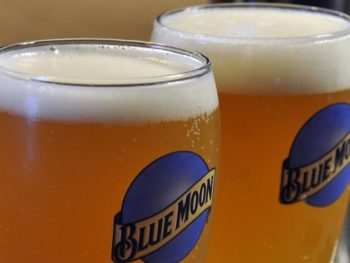
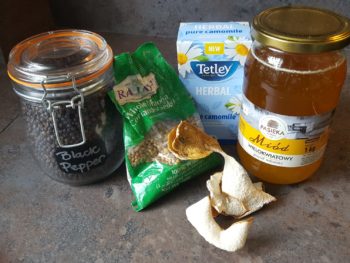

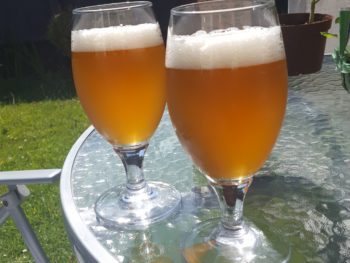
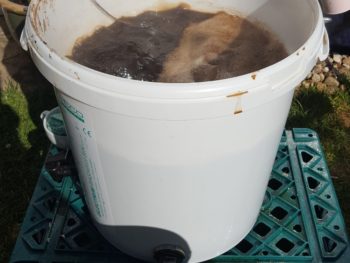
 My Tried-and-Tested All-Grain Oatmeal Stout Recipe
My Tried-and-Tested All-Grain Oatmeal Stout Recipe

